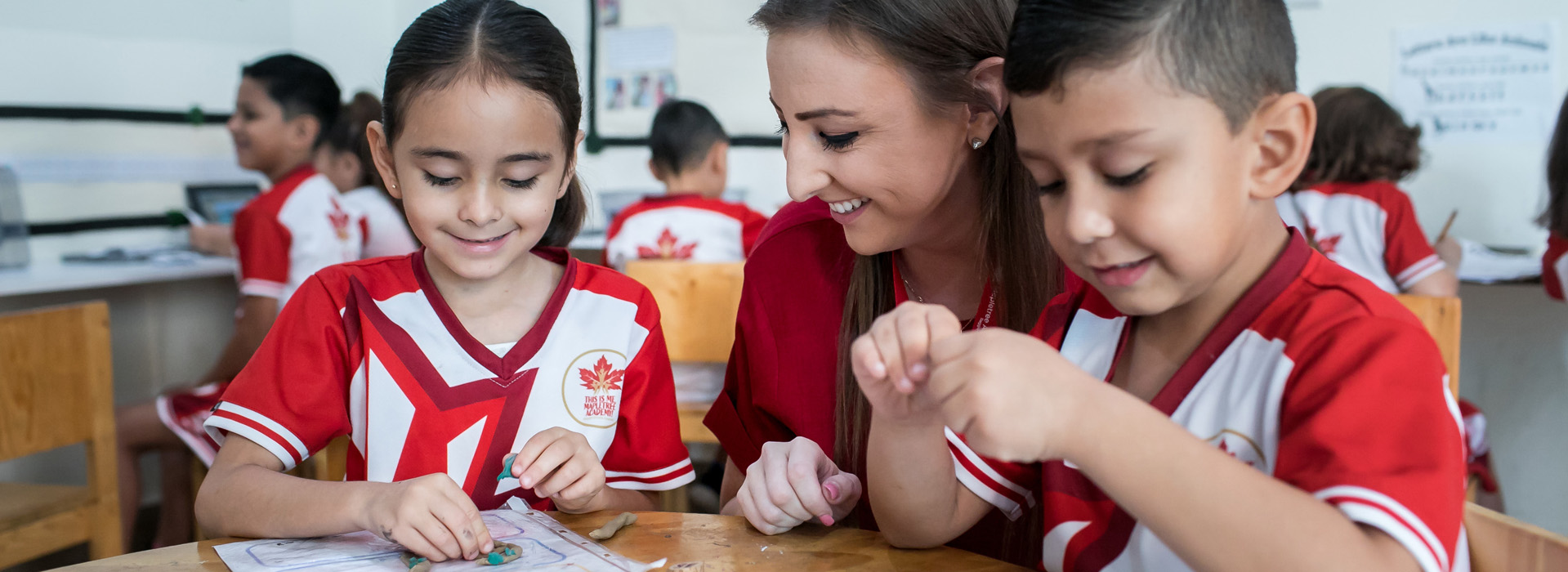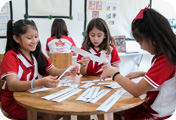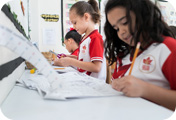English Language Arts and Literature (ELAL)
Language Arts Boxes: L.A. Boxes are a part of our Language Arts program that allows students the opportunity to learn all aspects of the English language Arts and Literature (ELAL) Alberta Curriculum. There are 5 boxes that students will rotate throughout the week. Each of these 5 boxes is crafted to cover the ELAL curriculum.
The boxes include:
- Vocabulary (communication & comprehension)
- Phonological Awareness (identifying and manipulating sounds in oral language)
- Phonics (relationships between sounds and letters in oral language)
- Reading Comprehension (ability to read a range of texts accurately, automatically and with expression)
- Grammar (development of effective communication)
Students have independence in this class as they are accountable for completing all 5 boxes by the end of each week. Students will keep track of their work in the form of a checklist that will be overseen by teachers.By learning and practicing everyday, students are able to strengthen literacy and writing skills and apply them in a variety of situations. This class is used as a springboard into our writing course, as each box is designed to develop a specific skill that will be applied in our writing workshops, Guided Reading and Home Reading.
Writing: As an extension of our L.A. Boxes, our students are provided with the opportunity to apply their literacy skills and knowledge in context. In our writing workshops, students use the Writing Process and understanding of the author’s craft in order to accurately and imaginatively articulate ideas and information.The students will apply the writing structures of opinion, informative and narrative writing in order to create and enhance ideas and information. Through these writing structures, students will have the opportunity to examine and use grammar, spelling and punctuation in a variety of contexts to develop effective communication.
Busy Boxes: (Kindergarten only) Another component of our Language Arts (ELAL) program, Busy Boxes are implemented at our school. Generally done in the morning, students work in partners or small groups to complete learning activities. Each box contains a different curricular focus (i.e. math, science, English, Spanish). This gives students the opportunity to practice skills in all aspects with a cross curricular approach. These activities are generally created so students are able to independently complete these activities without the support of the teacher.
Morning Meeting: The morning meeting is a daily gathering that sets a positive tone for the school day, fostering a sense of community and belonging among students. Typically held at the start of the day, this meeting provides an opportunity for students and teachers to connect, share, and prepare for the day's activities. The structure of the meeting often includes a greeting, reading strategies (1 for each day of the week) word problems, mental math, and science talks. Through interactive activities and discussions, students reinforce these core subjects, enhancing their overall academic development. The morning meeting creates a welcoming and structured start to the day, encourages positive interactions, and supports both academic and social-emotional learning, helping students feel ready and motivated to learn.
Guided Reading: In 15-20 minute sessions, children receive individualized attention to apply fluency strategies while reading. Teachers assess each child's reading level and provide tailored reading materials, such as books, comprehension activities, and reading strategies. This helps students gradually reach the grade level benchmark or progress at their own pace with necessary modifications. The goal of this program is to foster early literacy skills and promote a love of reading. It's crucial that students are provided with the appropriate learning tools to meet their individual needs.
Home Reading: The Home Reading Program is designed to foster a love of reading and enhance literacy skills outside the classroom. Parents are encouraged to engage in daily reading sessions with their children, providing support and encouragement. The program aims to create a positive reading environment at home, where children can practice fluency strategies and develop strong reading habits. Regular assessments by teachers along with our reading chart that is filled out at home are brought back to school ensuring that each child's progress is monitored. Then appropriate adjustments are made to keep them advancing at their own pace. By integrating reading into the daily routine, the program helps build a foundation for lifelong learning and academic success.







